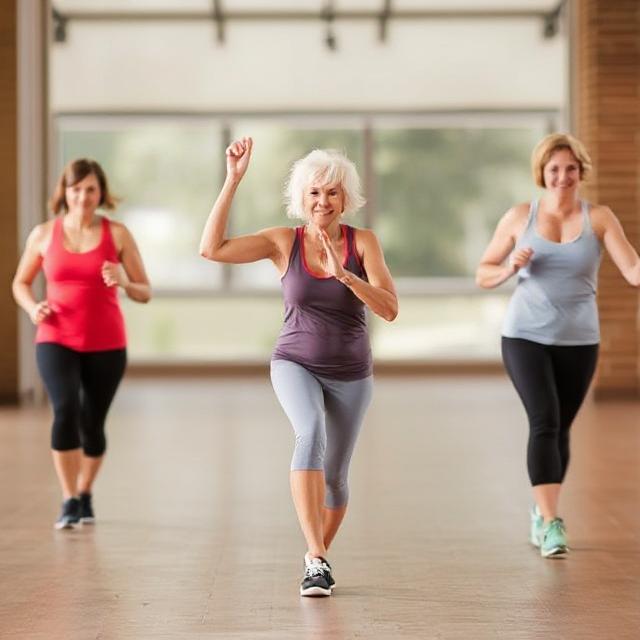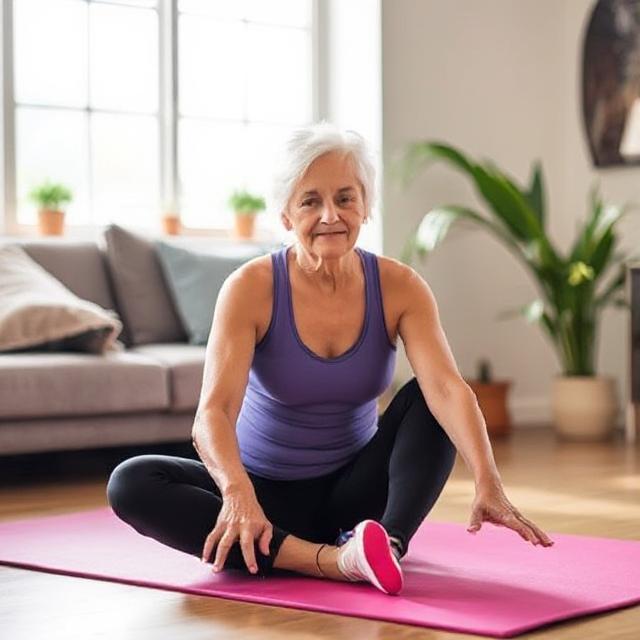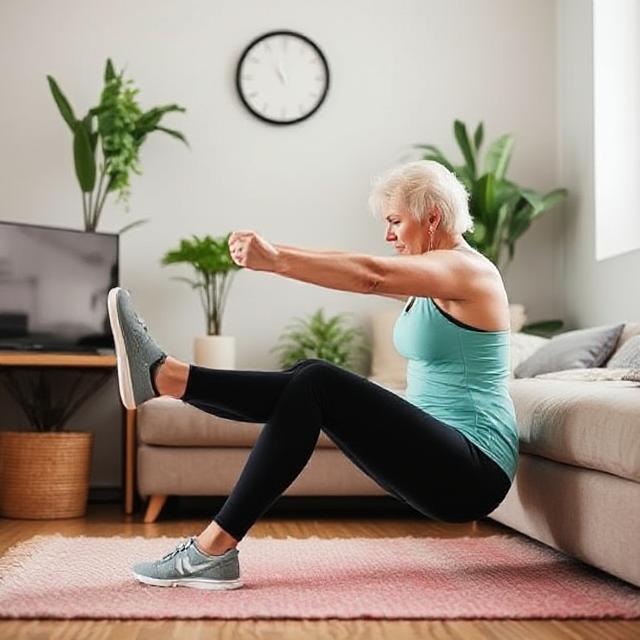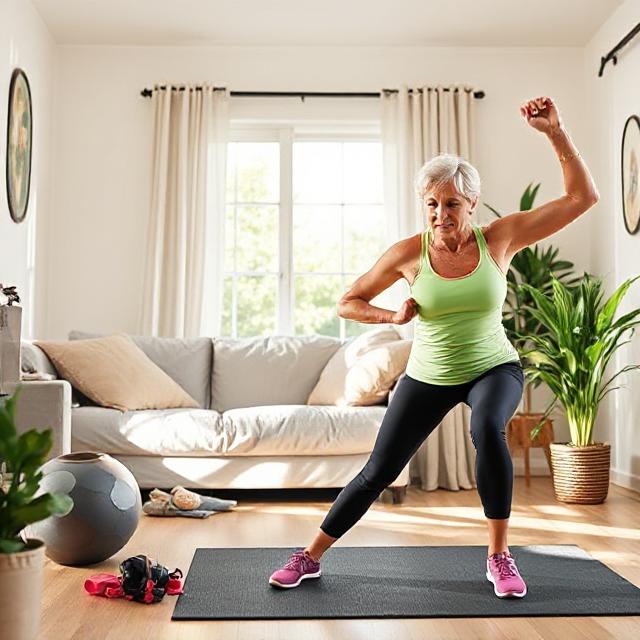Starting a home workout routine after 50 can be one of the best decisions you make for your health and well-being. However, building and sticking to a consistent fitness plan requires thoughtful strategies tailored to your lifestyle, physical condition, and goals. Whether you’re aiming to improve mobility, boost energy, or maintain muscle strength, the right approach can make all the difference. Here are seven smart tips to help you create and maintain a sustainable home workout routine that fits your needs and keeps you motivated.
1. Start with Realistic Goals
One of the most important foundations of a successful workout routine after 50 is setting realistic, achievable goals. It’s easy to get discouraged if you aim too high or expect rapid transformations. Instead, focus on small, incremental improvements—like increasing flexibility, enhancing balance, or simply moving more each day. These achievable goals help you build confidence and celebrate progress, which keeps motivation high. It’s also helpful to write down your goals and revisit them regularly. Consider goals related not only to physical fitness but also to mental well-being, such as reducing stress or improving sleep quality. By aligning your workouts with meaningful goals, you’re more likely to stay consistent and enjoy the journey, rather than viewing exercise as a chore.

2. Create a Dedicated Workout Space
Having a designated workout area at home can significantly improve your commitment and focus. It doesn’t need to be large or fancy—just a corner where you can safely move and keep your equipment organized. A dedicated space signals to your brain that it’s time to exercise, helping build routine and reduce distractions. Make sure the area has good lighting, ventilation, and enough room for your planned exercises. Adding motivational elements like a mirror, a yoga mat, or inspirational posters can enhance the ambiance and make workouts more enjoyable. If you’re using digital workout programs or videos, ensure your setup supports easy screen viewing. The more inviting and practical your workout space, the easier it will be to stick with your routine and create positive associations with your exercise sessions.

3. Incorporate a Variety of Exercises
Variety is key to both maintaining interest and ensuring a balanced fitness regimen. After 50, it’s important to combine cardiovascular activities, strength training, flexibility exercises, and balance work to support overall health and prevent injury. You might alternate between walking or low-impact aerobics, bodyweight exercises or resistance bands, stretching routines like yoga or Pilates, and balance drills such as standing on one leg. Variety prevents boredom and plateaus, challenges different muscle groups, and improves multiple aspects of fitness. It also allows you to listen to your body—if a certain movement feels uncomfortable, you can swap it for a different one without losing momentum. Plus, mixing things up keeps your mind engaged and your workouts fun, which increases your likelihood of consistency.

4. Listen to Your Body and Modify as Needed
One of the smartest tips for working out after 50 is to prioritize safety and comfort by tuning into your body’s signals. It’s normal to feel some muscle soreness after starting new exercises, but sharp pain or persistent discomfort should never be ignored. Modify exercises to accommodate any joint issues, mobility limitations, or chronic conditions. This might mean reducing intensity, limiting range of motion, or substituting movements that better suit your body. Many home workout programs offer beginner and advanced variations to tailor the workout to your fitness level. Remember, progress is about consistency and quality over intensity. Rest days are equally important to allow your body to recover and rebuild. By honoring your body’s needs and adjusting accordingly, you reduce injury risk and make exercise a positive, sustainable habit rather than a source of strain.

5. Schedule Your Workouts Like Appointments
Consistency is the secret to long-term success, and scheduling your workouts like important appointments can keep you accountable. Choose times of day when you feel most energetic and least likely to be interrupted—whether that’s early morning, lunchtime, or evening. Set reminders on your phone or calendar, and treat your workout sessions as non-negotiable commitments. Planning your routine weekly can help you balance exercise with other responsibilities and avoid skipping workouts. You might also find it helpful to plan your workouts around activities you enjoy, so you look forward to them. If motivation wanes, revisit your goals and remind yourself why you started. Over time, the habit of regular exercise becomes ingrained, making it easier to maintain even on busy days or during stressful periods.

6. Use Technology and Resources Wisely
Technology offers an incredible range of tools to support your home workouts after 50, from apps and video tutorials to virtual trainers and wearable fitness trackers. These resources can provide structure, guidance, and motivation, especially if you prefer working out solo. Apps often allow you to customize workouts based on your goals, time availability, and fitness level, and many include reminders and progress tracking. Video classes can offer the feel of a group setting without leaving home, with professional instructors guiding you safely through movements. Wearable devices track heart rate, steps, and calories burned, giving you real-time feedback and encouraging you to reach daily targets. However, choose technology that suits your comfort level—there’s no need to overwhelm yourself with gadgets. The goal is to enhance your routine, not complicate it.

7. Celebrate Progress and Stay Positive
Finally, maintaining a positive mindset and celebrating your progress—no matter how small—is essential for sustaining a home workout routine after 50. Focus on what your body can do, improvements in strength, endurance, flexibility, or how exercise improves your mood and energy. Track your milestones, take progress photos, or keep a fitness journal to reflect on your journey. Celebrate consistency and effort rather than perfection. Positive reinforcement helps build self-esteem and fuels motivation to keep going. Remember that fitness is a lifelong journey, with ups and downs, and it’s never too late to improve your health. Surround yourself with encouragement, whether from friends, family, or online communities, and be kind to yourself through challenges. This mindset will help turn exercise into a rewarding, enjoyable part of your everyday life.

Building and maintaining a home workout routine after 50 is a powerful way to enhance your physical health, mental well-being, and overall quality of life. By setting realistic goals, creating a dedicated space, incorporating variety, listening to your body, scheduling workouts consistently, using helpful technology, and celebrating every milestone, you create a sustainable fitness habit tailored to your unique needs. Remember, the journey is about progress, not perfection, and each step you take contributes to greater strength, flexibility, and confidence. Embracing these smart strategies empowers you to enjoy an active, vibrant lifestyle well into your later years—all from the comfort and convenience of your own home. With patience, persistence, and a positive mindset, you can transform exercise into a joyful, integral part of your daily routine that supports your health for years to come.


